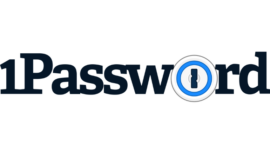The preview technology and controls will make it easier for IT teams to detect and contain threats before they infect systems, the company says.
Malware is increasingly becoming a widespread and costly problem for enterprises of all sizes. To address this issue, cloud content management company Box is announcing a new feature that detects malware and immediately takes steps to contain it before it can spread across a network. For Box users, the system will let them know when an incoming file is infected with malware, block them from downloading or sharing it, and alert security teams or IT departments.
As millions of people now work from home, it is becoming more necessary for organizations to protect their employees from a wide variety of threats that can permanently damage enterprises.
“Over a quarter of the data breaches that occur have malware involved in them and the average cost to a company going out and dealing with an attack is about $2.6 million, so it’s not a paltry sum of money. This is further compounded with the COVID situation. It doesn’t get any better when people are working from home and on unsecure networks or unsecure devices,” said Jeetu Patel, chief product officer at Box, in an interview.
“Leveraging Box’s unique preview technology, the automated controls in Box Shield minimize the impact of malware while allowing users to preview content without getting compromised,” Patel said. “Additionally, the intelligent security alerts help enterprises act on the issue in minutes. These advances make it easier than ever to protect your business without getting in the way of work.”
SEE: Special report: From cloud to edge: The next IT transformation (free PDF) (TechRepublic)
The detection capability and controls will be in place by the end of April, Patel said, adding that this was one of the most significant releases the company has had since unveiling Shield, which the company spent more than two years building.
When someone uploads an infected file to a Box account, the system automatically can tell there is a problem and treats the file differently. Users are notified but they can still preview the file.
Patel said this was key because one of the main problems many organizations have is that employees are curious. Even if they know something may not be safe, they tend to click on it, whether it be a file or a link. This act alone may expose an enterprise, he said, so it was important for users to have the ability to still look at the file without infecting their device or system with known malware.
Although you can preview the file, you cannot download or share it, and the system will send a report to administrators with information about the malicious file’s size, name and type of malware.
“The beauty of this is that it curbs the curiosity of the human being that was trying to go out and click on the file because usually what happens when you get an email with malware is you click on that link. Not everyone is sophisticated enough to know that ‘this is something I shouldn’t click on.’ Once you click on it, boom, everything gets infected,” Patel said.
“With us, you can click on the link, you can look at the file. If there is some level of data that you needed, you can still view the file and get the data that you needed that was mission critical data. However, the file is not going to be shared with anyone and it’s going to be on our server, so it’s not going to be shared with anyone and it’s not going to infect the rest of your computers. It’s setting a brand new standard for how security should be handled in the cloud.”
Patel added that the biggest difference between what Box is offering and their competitors is that security is baked into the platform as opposed to bolted on.
He said most security systems wouldn’t even give you an error message because the file or email wouldn’t even make it to your inbox. This has the tendency to frustrate and confuse users at a time when many people are at home and don’t have immediate access to IT teams who can explain what is going on.
“The future of information security is technology and platforms that reduce risk without slowing down the business. People are collaborating from more devices and remote locations than ever before, so security teams need telemetry and visibility into potential threats across their environment,” said Lakshmi Hanspal, global CISO at Box. “Automation and security innovations that are intuitive for users can massively reduce the burden on security teams and enable faster response.”
Also see

Image: iStockphoto/nicescene
Source of Article




